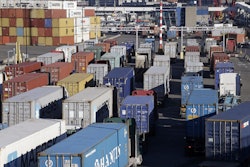More companies are adopting sustainability initiatives to help identify areas in their organization where they can reap savings that also help improve the environment. This is because sustainability has become a way for companies to understand the business practices that reduce waste, which impacts the bottom line and their environmental footprint.
Companies are also finding that a sustainability program is a great way to communicate how they are being a good corporate and community citizen. Looking at a company’s carbon footprint can be one of the most common places to start. Carbon dioxide is considered a greenhouse gas (GHG) emission and comes from energy use. By reducing GHG emissions, contaminants that can affect global warming and other air pollutants are reduced. In addition, through understanding and reducing GHG emissions, a company is also reducing their energy use and, therefore, their energy costs.
When analyzing GHG emissions, there are 3 areas for a company to consider:
Scope 1: All direct GHG emissions. Direct GHG emissions are emissions from sources that are owned or controlled by the reporting entity. Scope 1 can include emissions from fossil fuels burned on site or emissions from entity-owned or entity-leased vehicles.
Scope 2: Indirect GHG emissions. Indirect GHG emissions are emissions that are a consequence of the activities of the reporting entity, but occur at sources owned or controlled by another entity, such as consumption of purchased electricity, heat, or steam.
Scope 3: Other indirect emissions, such as the extraction and production of purchased materials and fuels, transport-related activities in vehicles not owned or controlled by the reporting entity and other outsourced activities.
Most companies start by analyzing Scope 1 and Scope 2 emissions, as these are the items they directly control by changing processes and utilizing alternative energy sources. But understanding Scope 3 emissions can help companies understand their entire carbon footprint and possibly identify opportunities to optimize the supply chain. This in turn can help companies save money, improve air quality, and help reduce worldwide fossil fuel dependency.
Carriers that are measuring their carbon output recognize the impact that the smallest improvement in miles per gallon (MPG) output or reduction in miles driven can have on fuel usage and, therefore, their carbon emissions. The easiest way for a carrier to cut down on carbon emissions is by reducing the number of shipments they handle! However, a sustainable carrier is one that is financially stable and can reduce their overall MPG.
Carriers can improve MPG performance by recapitalizing equipment, optimizing equipment used, and using alternative fuel hybrid equipment. Carriers can improve their total miles driven by optimizing routing and eliminating break-bulks, which reduces unnecessary miles driven and re-handling. Carriers can also improve their carbon emissions by using biodiesel mixes in their fuel. Shippers that understand which of their carriers are measuring carbon emissions and MPG improvement can be assured that these carriers are looking for ways to reduce fuel consumption. These carriers are investing in their companies, their communities, and their future.
At PITT OHIO, we’ve always been focused on MPG improvement because it makes good business sense. With the implementation of onboard computers, we were able to calculate not only MPG per power unit, but also the drivers’ shifting, idling, and stopping performance which directly impacts the unit’s MPG. By implementing a training program and metrics in regards to drivers’ MPG performance, we saw immediate improvement in our MPG. In addition, PITT OHIO’s vehicle maintenance group has specific programs to recapitalize the power equipment which means new vehicles with better MPG performance.
Our operations team works to make sure that the right freight goes on the right vehicle. By leveraging our straight trucks and sprinter vans, we see continued MPG improvement. In 2013 we are piloting CNG hybrid tractors and trailer skirts to improve MPG, as well as trailer racks to improve overall freight efficiency.
PITT OHIO’s building maintenance team also has been working to reduce energy and water usage at our terminal locations. They have achieved measurable carbon savings by implementing high efficiency lighting, waterless urinals, and piloting solar panels. In 2014 we opened our first Leeds Certified Goal terminal facility outside of Pittsburgh. PITT OHIO recognized that these various projects were going on throughout the company when we began measuring our carbon footprint. Working with Dr. Robert Sroufe and Dr. John Mawhinney from Duquesne University in Pittsburgh, we worked to inventory carbon emission sources and gather data on a regular basis to understand our monthly carbon emissions. This information is now gathered, along with other sustainability metrics, on a dashboard which our cross-functional Sustainability Steering Committee uses to understand how our carbon output is improving and identify which projects to focus on next.
Once a company is measuring its carbon emissions, it should be able to understand how much of those emissions can be allocated by their customers’ shipments. This is still not an exact science, but an estimate of the total carbon can be allocated to each customer by using the same methodologies as freight costing systems. By having a general understanding of what the customer is shipping (freight class and/or density), how often they are shipping, the origin and destination of the shipment, and the weight of the shipment the carrier can calculate the miles the shipment traveled and the portion of the carbon output of the vehicle to assign to the shipper. This can assist shippers in understanding their Scope 3 emissions. If a shipper has its own private fleet, a carrier that measures its own carbon may be able to help them understand how to measure their fleet’s carbon output. A shipper may even decide that the carbon output is difficult to optimize based on their company’s priorities and may choose to outsource their shipments to a carrier that is measuring and reducing their carbon output.
Being sustainable makes good business sense. Taking waste, such as carbon emissions, out of your operations and supply chain means savings. It also means that a company is interested in being a good corporate and community member. Being sustainable is also something that your customers may be looking for, especially as they start measuring their own carbon footprint. By measuring and identifying carbon sources, you assure that your company is not just talking the talk (also known as “green-washing”), but you are also walking the walk. Potentially one of the largest areas for carbon emissions is in the inbound and outbound movement of components and final products. Shippers that are interested in their carbon footprint can ask their carriers if they have a sustainability program and what it entails, if the carrier is measuring carbon emissions or MPG, or if their carrier is a member of the EPA’s SmartWay program. SmartWay also has programs for shippers that manage their own fleet. By partnering with carriers, shippers can learn more about their carbon footprint, the impact that their freight has on the environment, and the benefit of improving that impact.
For more information, please visit www.pittohio.com
Air Quality Benefits (sidebar)
Improving air quality is not only good for the environment, but it’s also good for our health. “One recent study concluded that global warming pollution emissions from human activities may already be causing an additional 1,000 air pollution– related deaths and 20 to 30 additional cancers annually for each 1 degree Celsius rise in temperature in the United States.” Breathing ozone can trigger chest pain, coughing, throat irritation, and worsen emphysema and asthma. Inhaling particulate pollution can result in respiratory illness, cardiovascular disease (heart disease and strokes), and even death. (Source: Ozone Basic Information. U.S. EPA/ Particulate Matter. Basic Information. U.S. EPA). Ozone exposure may cause harm to the central nervous system and may cause reproductive and developmental harm.


















